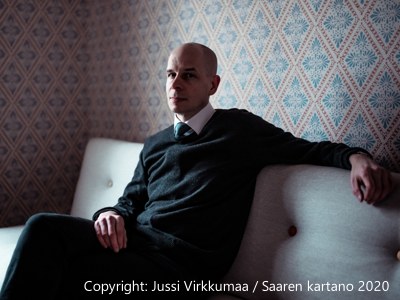Instrumentation: 3 (3. + Picc)–2–CA-2-Basscl-2, 4-2-2-Tuba/Bass tromb., Pk, Schlz (min. 2 players), Strings (min. 10-8-6-6-4)
Duration: ca. 13‘
Publisher: Schott Music
FP: Nov 17, 2006, Frankfurt/Main, HR Symphony Orchestra, Cond.: Peter Ruzicka
FP (first version of 1999): Sept. 28, 2000, St. Petri Lübeck (Orchestras of the Gymnasium Johanneum zu Lübeck and the St.Istvan-Gymnasium Budapest, Cond.: Heinz Arlt)
The first version was commissioned by the „Verein der Freunde und Förderer des Gymnasiums Johanneum zu Lübeck, Abteilung Musik“
Further performances:
Sep 30, 2000, Hannover (EXPO)
Nov 12, 2010, Jena (Jenaer Philharmoniker, André de Ridder)
Nov 17, 2010, London (British Premiere, BBC Symphony Orchestra/Andre de Ridder)
Sept 27/29, 2013, Bielefeld (Bielefelder Philharmoniker/Alexander Kalajdzic)
Oct 25-27, 2016, Greifswald/Stralsund (Philharmonisches Orchester Vorpommern/Golo Berg
Jan 18/19, 2017, Chemnitz (Robert-Schumann-Philharmonie/James Feddeck)
Radio broadcasts:
Nov 2006, Hessische Rundfunk
Feb 19, 2011, BBC Radio 3
Introduction:
Introduktion und Lichtspielszene may be described as „film music without film“, it is a musical sheet of pictures in partly lurid colours.
Film music – and especially the music from the early decades, for symphonic orchestra and with symphonic claim – has always fascinated me. The genre’s immediacy in telling tales and producing images is of irrestistible attraction, and so is the interior tension between superficial effects and clichés and often high-class compositional work that hides behind the scenes.
In a similar way, Introduktion und Lichtspielszene is characterised by rapidly changing, distinct moods, bulky cumulations and luscious, colourful orchestral sound. But, at the same time, the piece has a by all means complex structure with diligently elaborated details. The first, slow section serves as a compilation of material, from which many elements are taken up and developed during the following, faster section. In their beginning, an exposition of „thematic“ figures can be heard, but even though these motives return in several variations during the piece, the altogether texture of the composition is rather abstract, and it sounds clearly unlike the standardised Hollywood-sound.
Introduktion und Lichtspielszene is much more connected to advanced film scores which also endure as independent concert works (like e.g. Lazlo Lajtha’s Hortobágy, with some similarities in form and dramaturgy) or to Schoenberg’s Begleitmusik zu einer Lichtspielszene, to which the title adverts.
